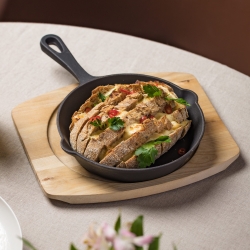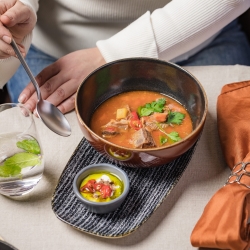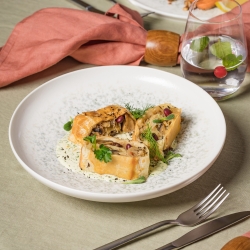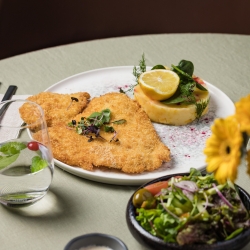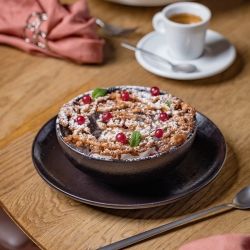
DAYS
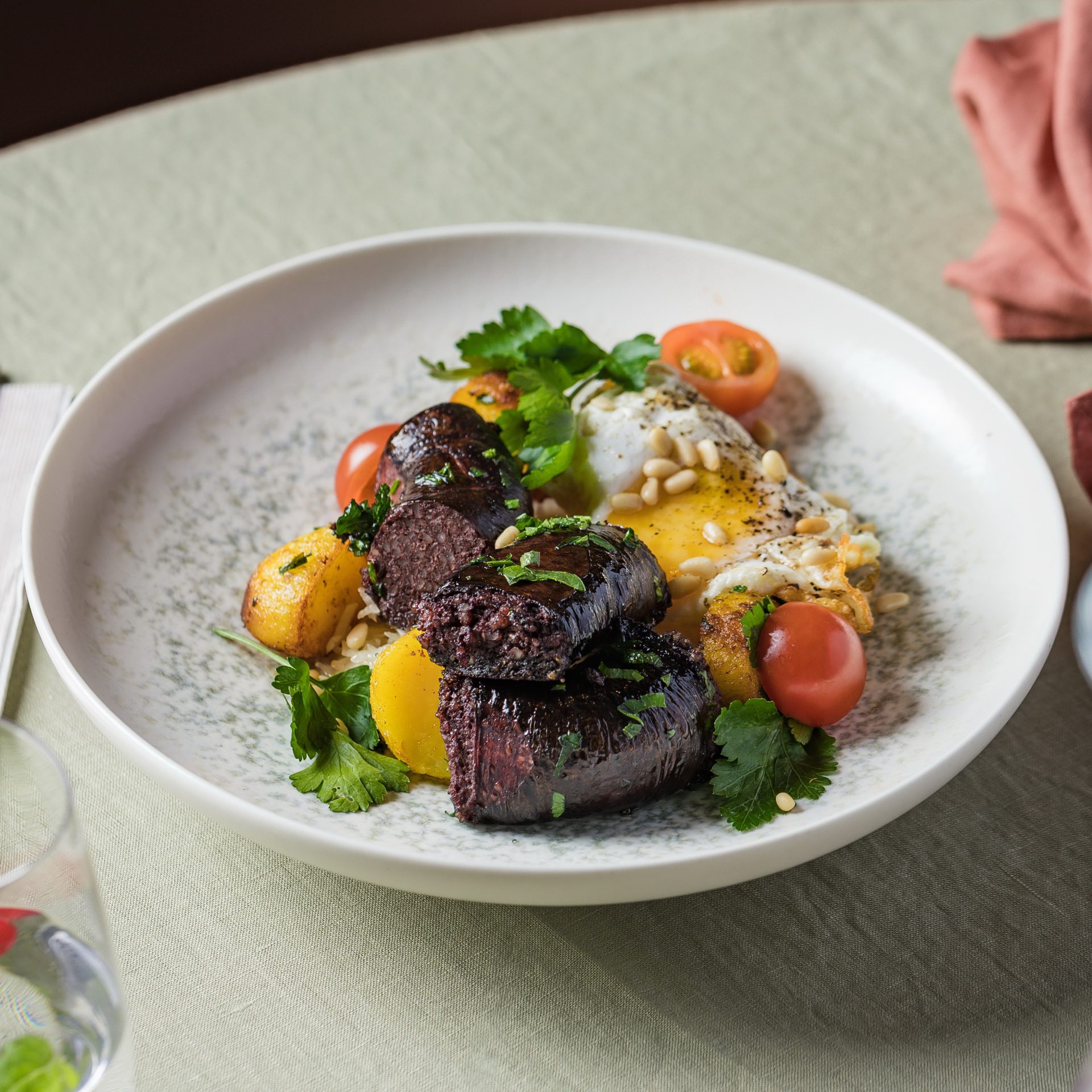
Austrian days
From 2024 01 16
In restaurants:
Algirdo str. 17, Vilniaus str. 18, Konstitucijos av., Vilnius;
HOT SMOKED TROUT STARTER
11,- €
Served with fried potatoes, quail eggs, trout roe with a sour cream and herb sauce
HOT LOAF OF BREAD ¬(2 pers.)
7,5 €
Steaming bread appetizer for sharing, served with a cheese gratin and a filling of chopped mushrooms, garlic and olives
AUSTRIAN BEEF SOUP
7,- €
Traditional, hearty and warming soup with beef short ribs meat. Served with a garnish of chilli pepper, cumin and sour cream
VEAL SCHNITZEL
15,- €
Austrian national dish of veal tenderloin, served with lemon, fresh vegetables, mashed potatoes with coarsely grated butternut squash pieces and chanterelle sauce
GRILLED RAINBOW TROUT STEAK
15,- €
With roast potatoes, Brussels sprouts, pickled blue onions and a greens and hazelnut sauce
AUSTRIAN BLOOD SAUSAGE “Blunzengröstl”
11,- €
Traditionally served with fried potatoes, sauerkraut, fried egg and pine nuts
VEGETARIAN “STRUDEL” “Burgenländischer Krautstrudel”
8,- €
Stu ed with fried sauerkraut, mushrooms and beans. Accompanied by a very matching cream and greens sauce
AUSTRIAN DESSERT ¬“Strauben”
6,- €
Vanilla ice cream and traditional redcurrant jam are hidden under the typical fragile spider’s hat of the Austrian “hawthorn”
APPLE PUNCH “STROH” ¬“ApfelSTROHdel” 250 ml
6,- €
Drink of hot apple juice, puree, cinnamon, brown sugar and Austrian Stroh rum
No products in the cart.

